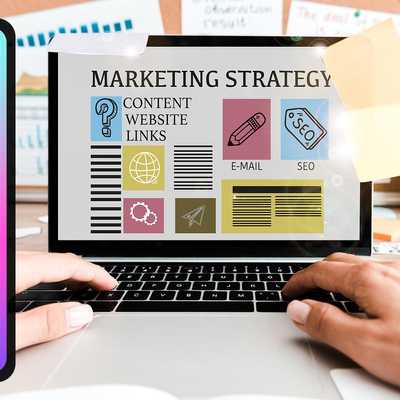-
- Define the Purpose of Your Website:
- Choose the Right Website Platform:
- Goal-setting:
- Branding:
- Website Structure:
- Mockup:
- Design and Develop the New Website:
- Plan Your Website Design Strategy:
- Wireframing:
- Research for Web Design Inspiration:
- Test Your Website:
- Maintenance and Iteration:
- Customize the Web Design:
- Optimize the User Experience:
- Make Your Website Mobile-Friendly:
- Content Creation:
- Visual Elements:
- Go Live:
-
Frequently Asked Questions (FAQs)
-
- 1. What is the first step in the web design process?
- 2. How do I choose the right website platform for my project?
- 3. Why is goal-setting important in web design?
- 4. What role does branding play in web design?
- 5. How do I structure my website for an optimal user experience?
- 6. What is the purpose of creating a mockup in the design process?
- 7. How can I ensure my website is mobile-friendly?
- 8. Why is content creation a critical aspect of web design?
- 9. How do visual elements contribute to web design?
- 10. What are the key steps in maintaining a website post-launch?
-
How to Design a Website
It takes a lot of work and a lot of imagination to design a website that works well. First, you should be clear about what your website is for and who it's meant for. This will help you make design decisions. To improve the user experience, make sure that the site is easy to navigate and that the material is organized in a way that makes sense. Pick a color scheme and fonts that go well together and are in line with your brand's personality.
It's important to make sure that your site looks and works well on all kinds of devices. Keep your design simple and clean, and use high-quality images and pictures to make it look better. Don't forget about performance; make sure your website loads quickly to keep people interested. Test and improve your design on a regular basis to keep your website interesting in the online world and to keep up with changing trends and user feedback.
what is the first step in the web design process
Full planning is the first step in the web design process. It's important to know what the website's purpose, goals, and target viewers are before starting to design it. You need to know exactly what the site is supposed to do and who it's meant to help. To do this, you need to do a lot of study, make user personas, and make a list of the website's main features and functions. Setting a clear budget, schedule, and scope for the project is also very important. Planning makes the design process organized and quick, which helps make sure the end result matches your goals and speaks to the people you want to use it.
Web design process steps
Define the Purpose of Your Website:
First, figure out what your website is mostly for. What kind of site is it? Is it an e-commerce store, a blog, a showcase, or a knowledge base? Knowing the goal will help you make all the design choices you need to.
Choose the Right Website Platform:
Choose a platform or Content Management System (CMS) that works well for your website. Examples include WordPress, Joomla, or your own HTML and CSS. The choice should fit with the goals of your website and what you know.
Goal-setting:
Give your website clear, measurable goals. Some examples of these goals are getting a certain amount of visitors, getting leads, or making more sales online. Setting clear goals will help you keep track of your progress.
Branding:
Give your website a strong company identity. This includes making a logo, picking a color scheme, and picking fonts that show off the style of your brand.
Website Structure:
Plan the site's structure and how to get around it. Put information into sections that make sense and make a menu that is easy for people to use. It's important that guests can quickly find what they need.
Mockup:
Make wireframes or mockups before you start working on the real design. These pictures of your website's plan help you and your team see how the design is put together and where things go.
Design and Develop the New Website:
You can now begin creating the website. You should make sure that your design fits with your brand, looks good, and works on all screen sizes. Work on the development, coding, and usefulness of your website at the same time to make sure it runs smoothly.
Plan Your Website Design Strategy:
Start by writing down the website's goals, who it's meant for, and what makes it special. Make an in-depth project plan that includes the project's goals, budget, and schedule. This plan will show you the way through the whole process.
Wireframing:
Make wireframes before you start designing. These are simple plans that show how your web pages are put together. Wireframes help you see where content will go and how users will move through the site, which improves the design's logic and usability.
Research for Web Design Inspiration:
Look at other websites in your field and others to get ideas. Find color schemes, design elements, and features that fit with your business and goals. This study will help you decide what kind of design to use.
Test Your Website:
Before you start your website, make sure it works perfectly. Make sure that it works, is easy to use, and works on a variety of computers and devices. Find and fix any problems, like lost links, pages that take a long time to load, or design that doesn't look right. User testing can help you make the experience better for users by giving you useful feedback.
Maintenance and Iteration:
After your website goes live, it's not the end of the road. You still need to maintain it and make changes to it. Maintain and update your site often to keep it fresh and safe. Use tools to keep an eye on how people use your site and learn how to make it better. Make changes to your design and material all the time to keep up with new trends and user needs.
Customize the Web Design:
To begin, make sure that your website design fits with your business and goals by customizing it. This includes picking the right fonts, colors, and layout to show off your brand's attitude and message. Make sure your design is one of a kind and sticks out in the online world.
Optimize the User Experience:
Focus on making a design that is user-centered to improve the user experience. Put an emphasis on easy browsing, clear calls to action, and a clear order of information. Make it simple for people to find the goods or information they need by streamlining the user journey. Watch how long it takes for pages to load to make sure everything goes smoothly.
Make Your Website Mobile-Friendly:
Since so many people browse the web on their phones, it's important to make your website adaptable. Your site should work well on both smartphones and tablets, as it should be able to easily adjust to different screen sizes and orientations. Thoroughly test on different devices to make sure they work.
Content Creation:
Make sure the material on your website is of high quality, interesting, and useful. This includes stories with useful information, pictures that draw you in, and multimedia elements like infographics or videos. Regular, useful content not only gets people interested, but it also helps with SEO and getting traffic from search engines.
Visual Elements:
Visual elements are very important in web design. Pick pictures, graphics, and videos that are interesting and go well with your style and content. Use visuals to improve the user experience and show who your business is. To keep page loading times low, make sure that these parts are optimized for use on the web.
Go Live:
Once the design and development of your website are finished, make sure it works well, is compatible with other websites, and is fully tested. Take care of any problems that come up while trying. After that, it's time to start your website and let everyone see it.
Web design process for clients
For clients, the web design process is a trip where everyone works together and communication and understanding are very important. It starts with a full consultation to learn about the client's strategy, goals, and target audience. Once we know what the goals are, we make a thorough project plan and show the layout approval wireframes. Then we move on to the design part, where we make an interface that looks good, is easy to use, and includes elements of the client's brand.
Continuous feedback from clients is built in to make sure that everything is in line with what they expect. After the website is launched, it is thoroughly tested to make sure it works and is adaptable. After the site goes live, our customer-focused method includes ongoing support, maintenance, and changes based on changing needs. This makes sure that the site has a successful and long-lasting online presence.
What Makes an Effective Website Design
A well-designed website combines good looks, useful features, and user-centered ideas in a way that works well. It captures people's attention with a layout that looks good and fits with the brand's message and personality. It puts the user experience first by having easy-to-use controls, quick load times, and clear calls to action. The content is useful, interesting, and well-organized, meeting the wants of the intended audience.
It must be mobile-friendly so that users can easily reach it from all of their devices. The site stays useful with regular updates and ongoing upkeep. Most importantly, a good website design turns casual visitors into active users, helping the site reach its goals, whether those goals are to make sales, share information, or encourage contact, all while leaving a positive, long-lasting impression.
How to create a website in HTML?
Using HTML to make a website is a basic process that starts with writing an organized text file. First, set the page's doctype and put your text inside HTML and head tags. In the head area, you should include metadata like the page title and the character encoding. You can use CSS to make visual designs by linking to external stylesheets or putting them in the head. Use different HTML tags, like headings, paragraphs, lists, and images, to organize your text in the body section.
Use divs and spans to organize and style your text the way you want. For usability and SEO, make sure you use semantic HTML the right way. Add links, forms, and scripts with JavaScript to make things work better. Last, save your file with the extension ".html" and put it on a web server so that people can read it online. These basic HTML structures are the building blocks for more complex websites. As you learn more and try new things, you'll be able to make even more complex web experiences.
Can coders make websites?
Yes, hackers can definitely make websites. In fact, writing is one of the most important skills for building websites. To build and create websites from scratch, web developers and designers use a variety of programming languages, such as HTML, CSS, JavaScript, and more. Structure is made up of HTML, design is made up of CSS, and functionality is added by JavaScript.
To make dynamic web apps, developers can also use server-side programming languages like Ruby, PHP, or Python. Coders are in charge of the code that makes websites work, whether it's a simple flat site or a complex web application. They also change and update websites all the time to keep them up to date and safe.
Frequently Asked Questions (FAQs)
1. What is the first step in the web design process?
The first step is to write down what your website is for and what you want it to achieve. To guide the planning and development process, you need to know what your goals are.
2. How do I choose the right website platform for my project?
Which website platform you choose will depend on your needs. To make an informed choice, think about things like how well it works, how easy it is to use, and how it can be expanded.
3. Why is goal-setting important in web design?
Setting goals helps you see how well your website is doing and makes sure that the design choices you make are in line with your goals, whether they are for traffic, sales, or engagement.
4. What role does branding play in web design?
Branding is important for making an online presence that is uniform and easy to remember. It has things like logos, color schemes, and fonts that show who you are as a brand.
5. How do I structure my website for an optimal user experience?
Organize the information on your website in a way that makes sense and make the menu system easy to use. This makes the experience better for users and makes it easy for guests to find what they need.
6. What is the purpose of creating a mockup in the design process?
You can see how your website's plan and structure will look with mockups. They help you and your team see where design elements and content will go before the project starts being built.
7. How can I ensure my website is mobile-friendly?
If you want your website to work well on phones, make sure it's adaptable, which means it can change sizes to fit different screens. It is important to test regularly on a variety of devices.
8. Why is content creation a critical aspect of web design?
Making content is important for keeping people interested and getting your point across. It has text, pictures, videos, and other media that your guests can use to learn and have fun.
9. How do visual elements contribute to web design?
Visual elements, like pictures and graphics, make your website look better and help get your brand's message across. They need to be chosen and made better for the web.
10. What are the key steps in maintaining a website post-launch?
Once your website is live, you should keep it safe and up-to-date by updating and maintaining it on a regular basis. This includes updates to material, security patches, and making the site run faster.



